- Alnus glutinosa or Alder
- Carpinus betulus or Hornbeam
- Corylus avellana or Hazel
These are the 3 other genera all with only one species native on the British Isles, which are also in the Betulaceae or Betula family, like the Birch which I covered in an earlier blog-post!
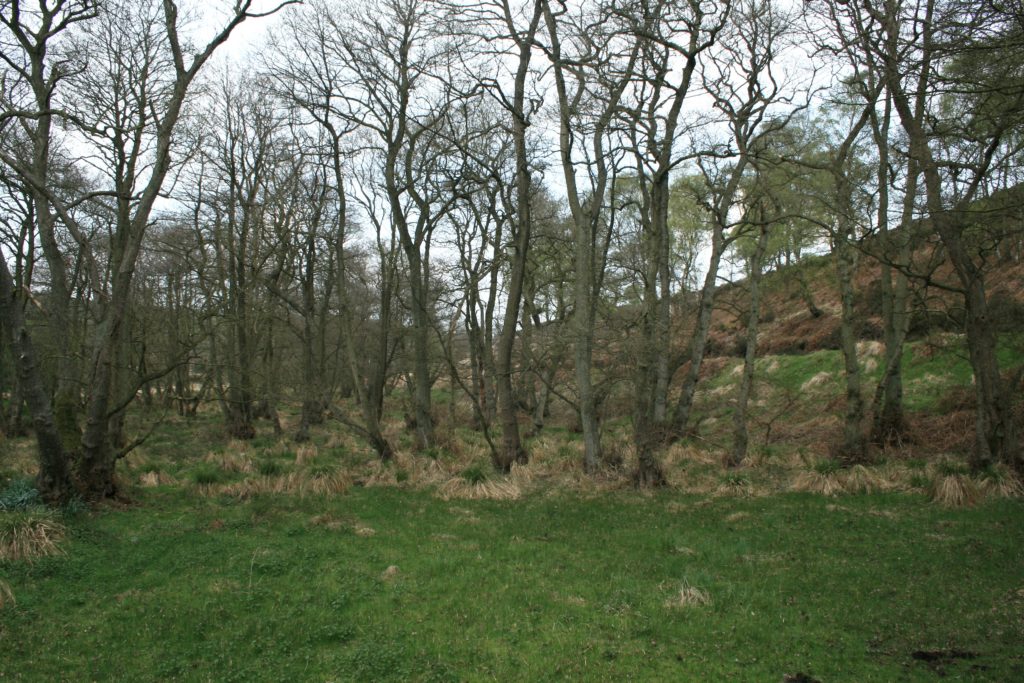
Information for this blog is again from various websites, for more information follow the links on the plant names. Green background signifies all sorts of uses, blue background for wildlife and ecological uses and pink background is for medicinal use. Pictures by Matt Summers, otherwise stated.
Contents:
Alnus glutinosa or Alder
Carpinus betulus or Hornbeam
Corylus avellana or Hazelnut
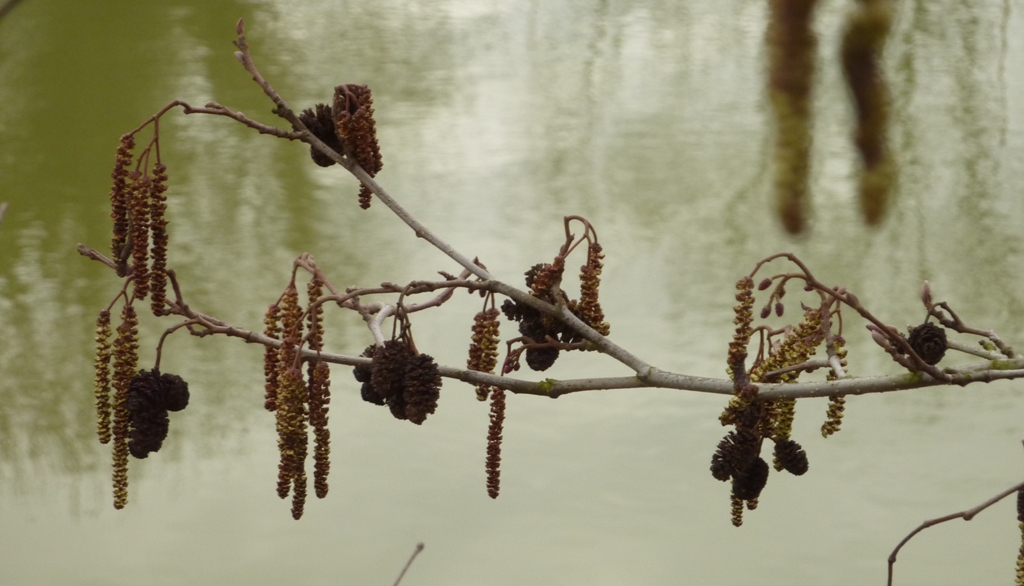
Alnus glutinosa or Alder
A deciduous tree of damp or wet, basic to moderately acidic soils, found beside rivers, streams, canals, lakes and ditches, and in flood plains, fens and bogs, carr and wooded dune-slacks. It can rapidly seed into open sites, producing even-aged stands of mature trees, but seedlings are very shade- and drought-sensitive, so regeneration in woodland is often poor.
Soft and porous, alder wood is only durable if kept wet, and its value to humans is down to its ability to withstand rotting in water. Apparently, Venice is built on alder piles, thanks to the durability of its timber in water.
Historically, it has been used in the construction of boats, sluice gates and water pipes. These days, alder wood is used to make timber veneers, pulp and plywood.
It is thought that the female woodworm lays eggs in alder in preference to other wood. Traditionally, alder branches were cut and placed in cupboards to deter woodworm from laying eggs in the cupboard timber.
Alder coppices well and the wood makes excellent charcoal and gunpowder. The roots have nitrogen-fixing nodules, conditioning the soil and improving soil fertility on former industrial wasteland and brownfield sites. Alders are also used in flood mitigation.
Alder used to be the preferred wood to make clogs, and it was said that a few alder leaves placed in the shoes before a long journey would cool the feet and prevent swelling.
Ecology and Wildlife:
The common alder is most noted for its symbiotic relationship with the bacterium Frankia alni, which forms nodules on the tree’s roots. This bacterium absorbs nitrogen from the air and fixes it in a form available to the tree. In return, the bacterium receives carbon products produced by the tree through photosynthesis. This relationship, which improves the fertility of the soil, has established the common alder as an important pioneer species in ecological succession.
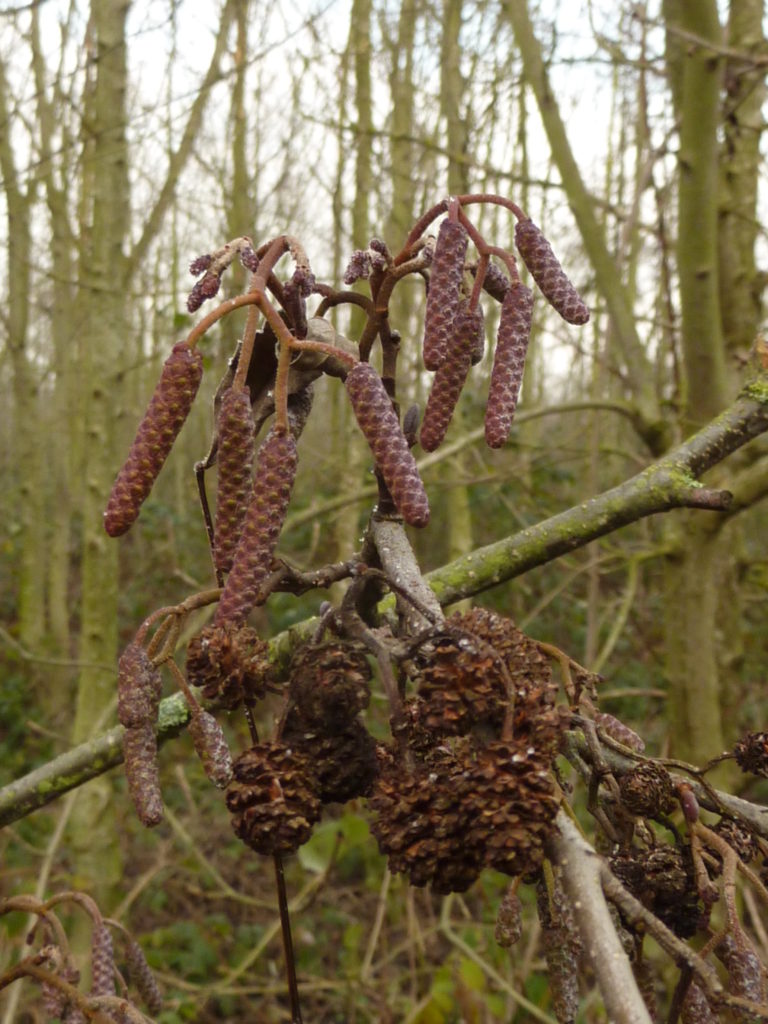
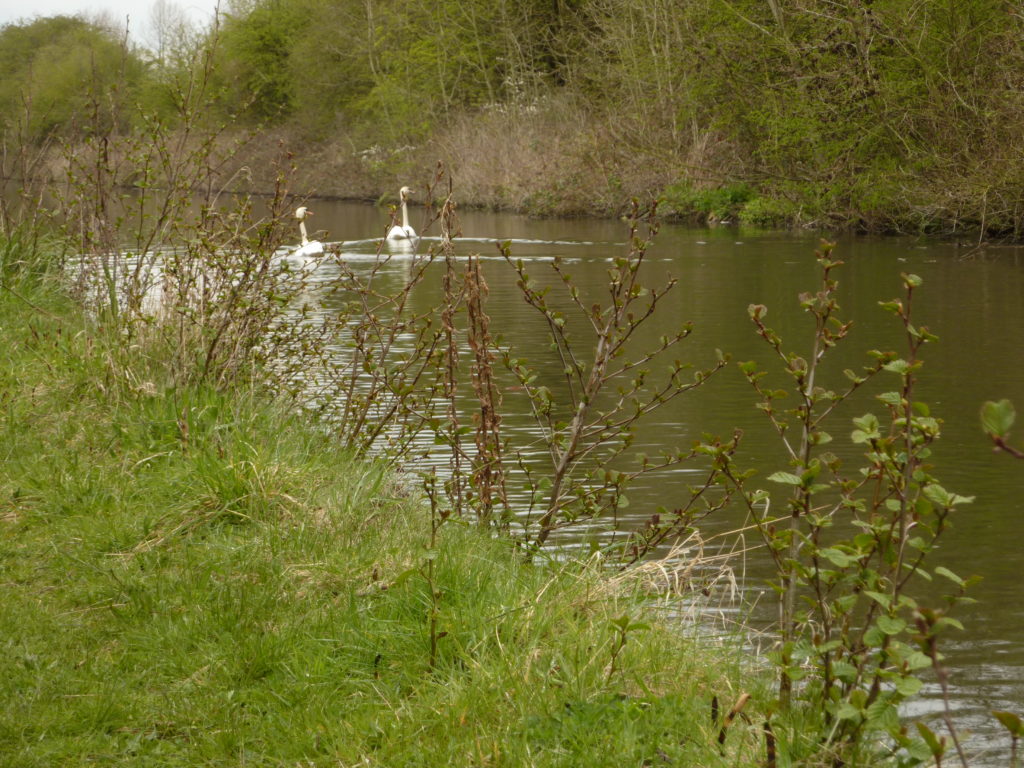
- The common alder is important to wildlife all year round and the seeds are a useful winter food for birds.
- Alder is the food plant for the caterpillars of several moths including the alder kitten, pebble hook-tip, the autumnal and the blue-bordered carpet moth. Catkins provide an early source of nectar and pollen for bees, and the seeds are eaten by the siskin, redpoll and goldfinch.
- The wet conditions found in alder woodland are ideal for a number of mosses, lichens and fungi, along with the small pearl-bordered fritillary and chequered skipper butterflies, and some species of crane fly. Alder roots make the perfect nest sites for otters.
- Deer, sheep, hares and rabbits feed on the tree and it provides shelter for livestock in winter.
- It shades the water of rivers and streams, moderating the water temperature, and this benefits fish which also find safety among its exposed roots in times of flood. The common alder is the food plant of the larvae of a number of different butterflies and moths and is associated with over 140 species of plant-eating insect.
- The tree is also a host to a variety of mosses and lichens which particularly flourish in the humid moist environment of streamside trees. Some common lichens found growing on the trunk and branches include tree lungwort (Lobaria pulmonaria), Menneguzzia terebrata and Stenocybe pullatula, the last of which is restricted to alders.
- Some 47 species of mycorrhizal fungi have been found growing in symbiosis with the common alder, both partners benefiting from an exchange of nutrients. As well as several species of Naucoria, these symbionts include Russula alnetorum, the milkcaps Lactarius obscuratus and Lactarius cyathula, and the alder roll-rim Paxillus filamentosus, all of which grow nowhere else except in association with alders. In spring, the catkin cup Ciboria amentacea grows on fallen alder catkins.
- The common alder is used as a pioneer species and to stabilise river banks, to assist in flood control, to purify water in waterlogged soils and to moderate the temperature and nutrient status of water bodies.
- The nitrogen-rich leaves falling to the ground enrich the soil and increase the production of such trees as walnut, Douglas fir and poplar on poor quality soils. Although the tree can live for up to 160 years, it is best felled for timber at 60 to 70 years before heart rot sets in.
- On marshy ground it is important as coppice-wood, being cut near the base to encourage the production of straight poles.
Ornamental Uses:
The species is cultivated as a specimen tree in parks and gardens, and the cultivar ‘Imperialis’ has gained the Royal Horticultural Society‘s Award of Garden Merit.
Uses as a timber:
- The wood is soft, white when first cut, turning to pale red; the knots are attractively mottled. The timber is not used where strength is required in the construction industry, but is used for paper-making, the manufacture of fibreboard and the production of energy.
- Under water the wood is very durable and is used for deep foundations of buildings. The piles beneath the Rialto in Venice, and the foundations of several medieval cathedrals are made of alder.
- The wood is used in joinery, both as solid timber and as veneer, where its grain and colour are appreciated, and it takes dye well. As the wood is soft, flexible and somewhat light, it can be easily worked as well as split. It is valued in turnery and carving, in making furniture, window frames, clogs, toys, blocks, pencils and bowls.
Uses in Tanning and dyeing:
- The bark of the common alder has long been used in tanning and dyeing. Depending on the mordant and the methods used, various shades of brown, fawn, and yellowish-orange hues can be imparted to wool, cotton and silk. Alder bark can also be used with iron sulphate to create a black dye which can substitute for the use of sumach or galls.
- The shoots of the common alder produce a yellowish or cinnamon-coloured dye if cut early in the year. Other parts of the tree are also used in dyeing; the catkins can yield a green colour and the fresh-cut wood a pinkish-fawn colour.
- It is also the traditional wood that is burnt to produce smoked fish and other smoked foods, though in some areas other woods are now more often used. It supplies high quality charcoal.
- The leaves of this tree are sticky and if they are spread on the floor of a room, their adhesive surface is said to trap fleas.
Medicinal Uses:
- The bark of common alder has traditionally been used as an astringent, a cathartic, a hemostatic, a febrifuge, a tonic and a restorative (a substance able to restore normal health).
- A decoction of the bark has been used to treat swelling, inflammation and rheumatism, as an emetic, and to treat pharyngitis and sore throat.
- Ground up bark has been used as an ingredient in toothpaste, and the inner bark can be boiled in vinegar to provide a skin wash for treating dermatitis, lice and scabies.
- The leaves have been used to reduce breast discomfort in nursing mothers and folk remedies advocate the use of the leaves against various forms of cancer.
- Alpine farmers are said to use the leaves to alleviate rheumatism by placing a heated bag full of leaves on the affected areas.
- Alder leaves are consumed by cows, sheep, goats and horses though pigs refuse to eat them. According to some people, consumption of alder leaves causes blackening of the tongue and is harmful to horses.
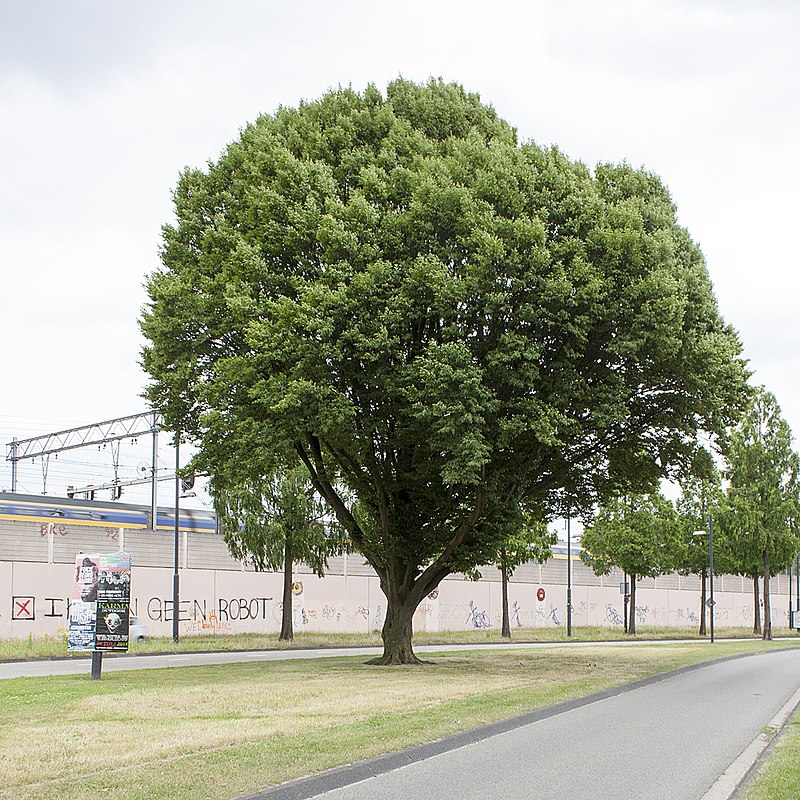
Carpinus betulus or Hornbeam
A long-lived deciduous tree, found as a native in both pure and mixed woodland, preferring moderate soil fertility and moisture on base-poor sandy or loamy clays, or clay-with-flints. Within its native range, coppiced individuals are often the dominant member of the shrub layer in Quercus woods. It is also extensively planted in woodlands, on roadsides, in amenity areas and for hedging, both within and outside its native range.
Carpinus betulus is a native, thought to be confined to south-eastern England, as is clearly shown on the map in the 1962 Atlas. Since then, however, the distinction between its native and introduced range has been completely obscured by plantings.
Hornbeams are small to medium-sized trees, Carpinus betulus reaching a height of 32 m. One of the most distinct features are the bunches of winged seeds in autumn.
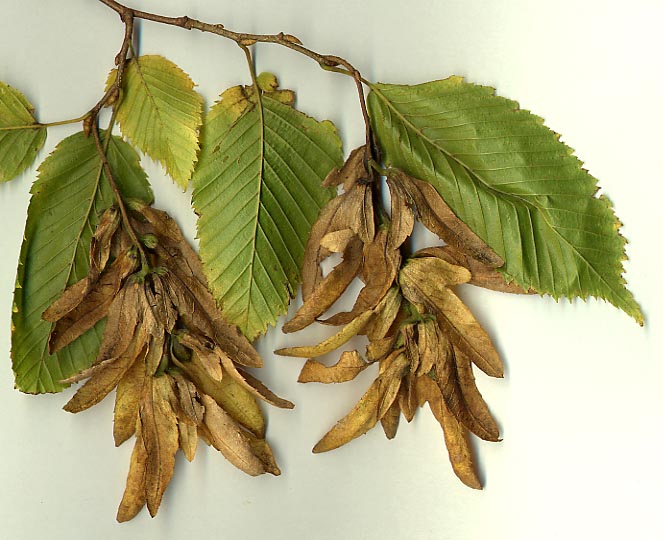
The asymmetry of the seedwing makes it spin as it falls, improving wind dispersal. The shape of the wing is important in the identification of different hornbeam species. Typically, 10–30 seeds are on each seed catkin.
Uses to Wildlife:
Hornbeams are used as food plants by the larvae of some Lepidoptera species, including autumnal moth, common emerald, feathered thorn, walnut sphinx, Svensson’s copper underwing, and winter moth (recorded on European hornbeam) as well as the Coleophora case-bearers C. currucipennella and C. ostryae.
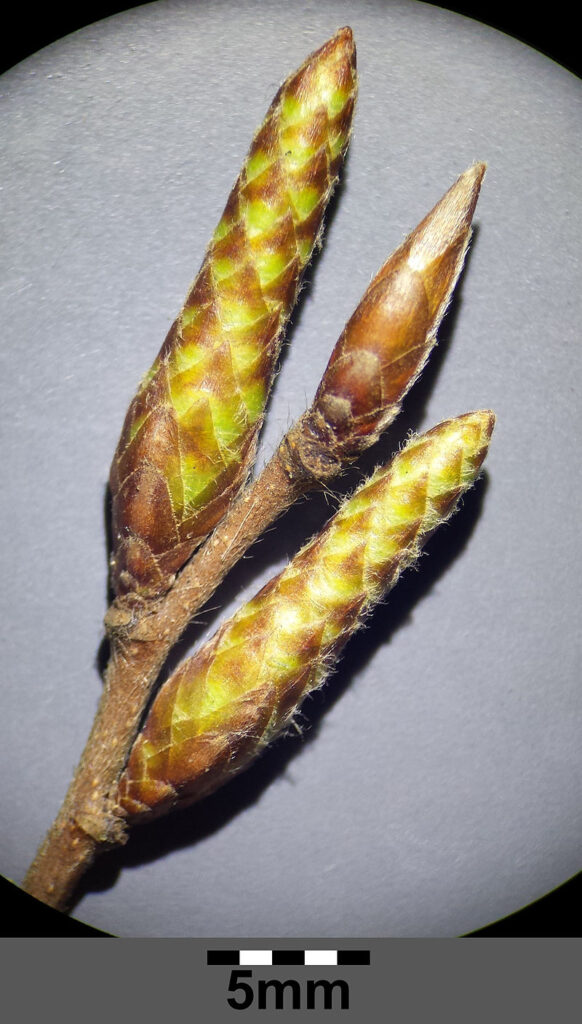
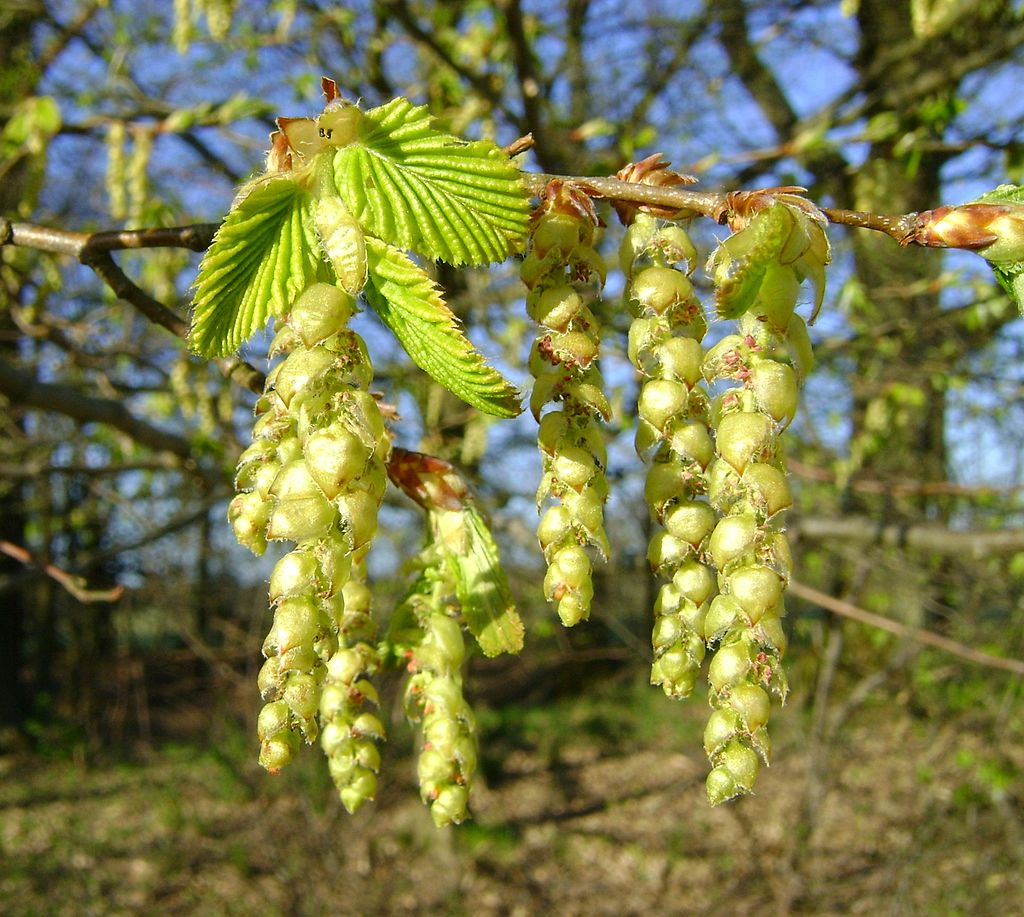
Other Uses:
- Hornbeams yield a very hard timber, giving rise to the name “ironwood”.
- Dried heartwood billets are nearly white and are suitable for decorative use. For general carpentry, hornbeam is rarely used, partly due to the difficulty of working it.
- The wood is used to construct carving boards, tool handles, handplane soles, coach wheels, piano actions, shoe lasts, and other products where a very tough, hard wood is required.
- The wood can also be used as gear pegs in simple machines, including traditional windmills.
- It is sometimes coppiced to provide hardwood poles.
- It is also used in parquet flooring and for making chess pieces.
Ornamental Use:
- Carpinus betulus is widely cultivated as an ornamental tree, for planting in gardens and parks throughout north west Europe. There are several cultivars, notably:
C. betulus ‘Fastigiata’ or ‘Pyramidalis’, a very fastigiate tree when young, which has become a popular urban street tree in the United Kingdom and other countries.
C. betulus ‘Frans Fontaine’, a similar fastigiate tree to ‘Fastigiata’
- Both the species and the cultivar C. betulus ‘Fastigiata’have gained the Royal Horticultural Society‘s Award of Garden Merit.
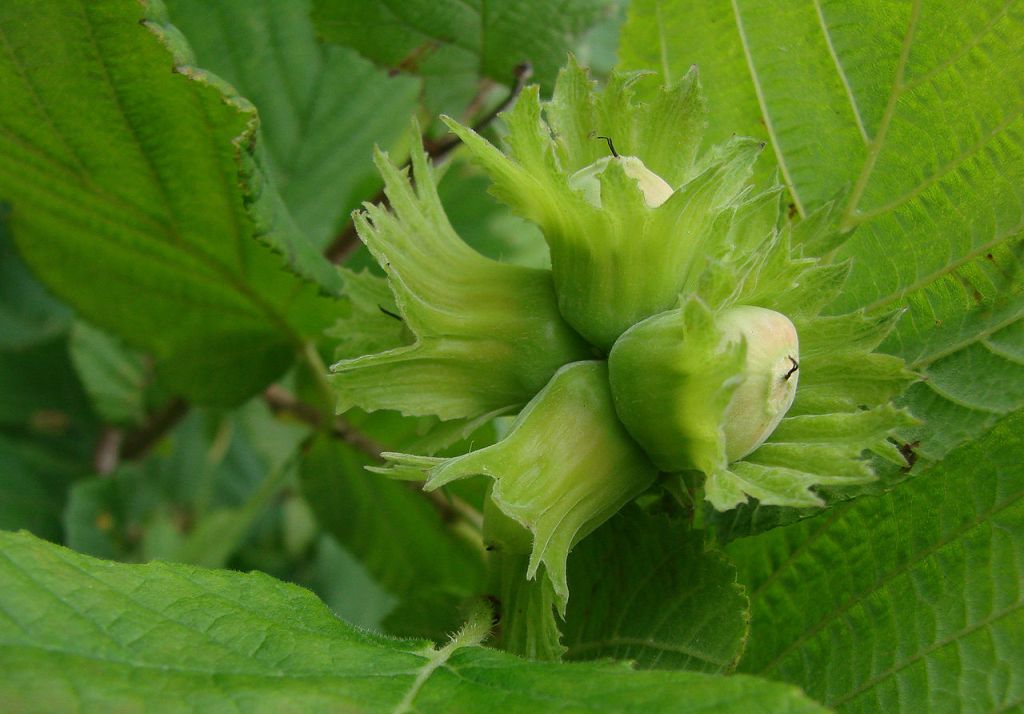
Corylus avellana or Hazelnut
A deciduous suckering shrub of dry or damp, calcareous to mildly acidic soils, but favouring moist, base-rich conditions. It is native in the understorey of many woods, in scrub, hedgerows, on riverbanks, limestone pavement, cliffs and gullies, but it is also very extensively planted in woods and in hedgerows. Hazel woodland has recently been recognized as an important feature of the hyperoceanic zones of Scotland and Ireland
Uses for Wildlife:
The leaves provide food for many animals, including Lepidoptera such as the case-bearer moth, Coleophora anatipennella. Caterpillars of the concealer moth, Alabonia geoffrella, have been found feeding inside dead common hazel twigs. See also List of Lepidoptera that feed on hazels.
The fruit are possibly even more important animal food, both for invertebrates adapted to circumvent the shell (usually by ovipositing in the female flowers, which also gives protection to the offspring) and for vertebrates which manage to crack them open (such as squirrels and corvids). Both are considered pests by hazelnut growers. The grey, introduced squirrel in Britain is particularly cursed as no hazelnuts are safe from them!
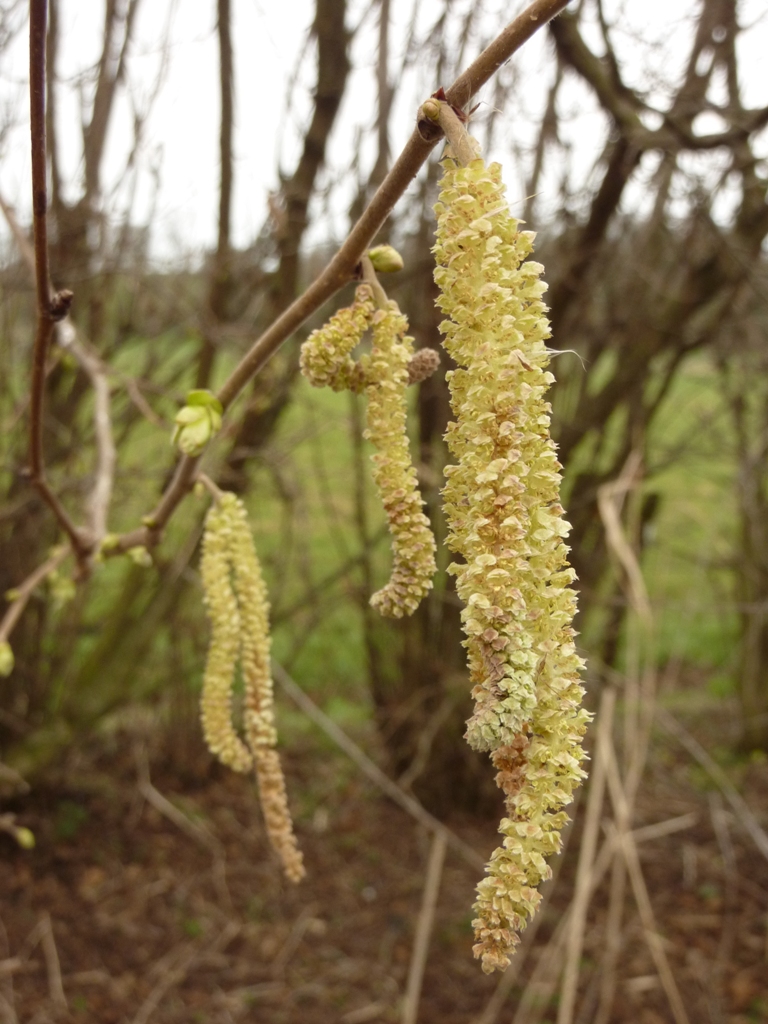
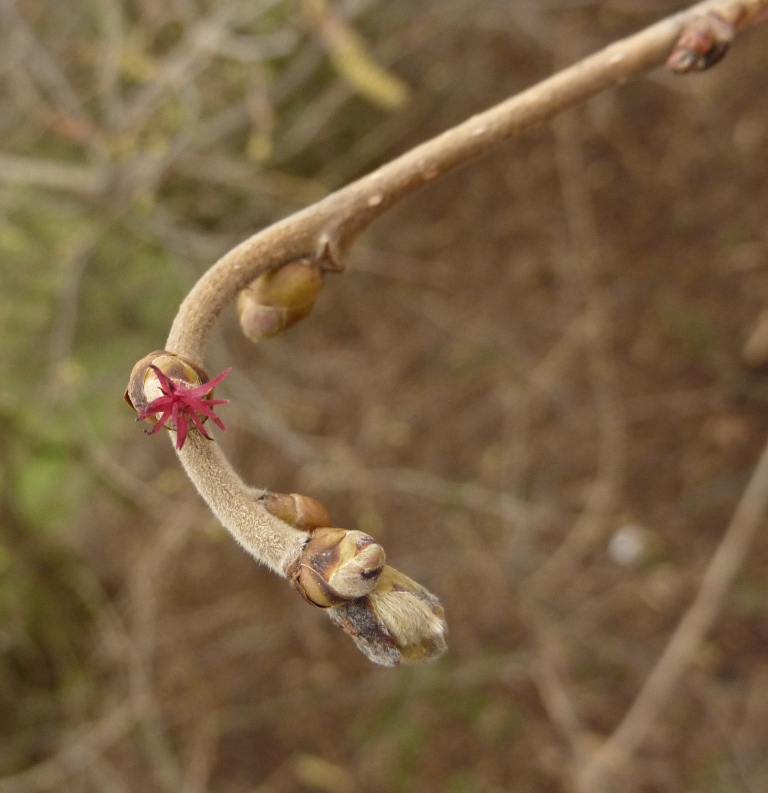
Uses for us:
- It is an important component of the hedgerows that were the traditional field boundaries in lowland England.
- The wood was traditionally grown as coppice, the poles cut being used for wattle-and-daub building and agricultural fencing.
- The straight poles are still preferred for the traditional (Runner) bean poles rather than the more modern bamboo canes in the construction of long lasting wigwams and other climbing frames.
- Common hazel is cultivated for its nuts. The name hazelnut applies to the nuts of any of the species of the genus Corylus, but in commercial settings a hazelnut is usually that of C. avellana. This hazelnut or cob nut, the kernel of the seed, is edible and used raw or roasted, or ground into a paste. The cob is round, compared with the longer filbert nut.
It is readily distinguished from the closely related filbert (Corylus maxima) by the short involucre; in the filbert the nut is fully enclosed by a beak-like involucre longer than the nut.
Hazelnuts are rich in protein and unsaturated fat. They also contain significant amounts of manganese, copper, vitamin E, thiamine, and magnesium.
There are many cultivars of the hazel ( see Wikipedia). Some of these are grown for specific qualities of the nut including large nut size, and early and late fruiting cultivars, whereas other are grown as pollinators. The majority of commercial hazelnuts are propagated from root sprouts. Some cultivars are of hybrid origin between common hazel and filbert.
Ornamental Uses:
- A selection with twisted branches has been propagated horticulturally as Corylus avellana ‘Contorta’. This is especially attractive in the winter garden or as cut branches in indoor decorations.
